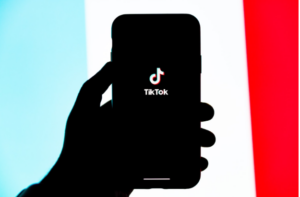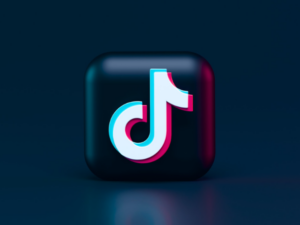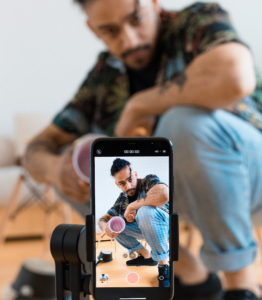On August 2nd 2018, a social media app centered around short 15-60 second videos was launched, and no one could have predicted the impact it would have on today’s culture. This app, formerly Musical.ly, but today called TikTok, is one of the world’s most popular. In this article, we’ll do a deep dive into the app. We’re going to be talking about hidden features, facts and even scandals of the TikTok app.
3.5 Billion Downloads
In January 2023, TikTok hit a monumental milestone. It became the 5th most downloaded app of all time, crossing 3.5 billion downloads. Yes, 3.5 billion downloads. That’s nearly half of the official world population.
TikTok’s Logo
Have you ever noticed that the TikTok logo is actually two things combined into one? The first one you might have noticed is a musical note. This alludes to the fact that music is the core of the TikTok app and videos. The second component is actually part of a separate logo. This is the letter “d,” which represents Douyin, the original version of the TikTok app, from China. This takes us to our next little-known fact.
TikTok is a Clone App
Yes, you read that right. TikTok wasn’t built from scratch and then put on the Appstore. It was cloned from the Chinese app Douyin. Douyin is basically the original Chinese version of TikTok, run by the same company, called Bytedance. But there’s more to this story.
Two Sides of the Same Code
You see, when Douyin first launched in China, it served its users content much like what we see on TikTok today. But the Chinese government didn’t like it, so it imposed restrictions on the app. Now Douyin only serves “positive” and educational content like science experiments, museums, historical facts, etc. The difference between the content served on both apps is so great that social media ethicist Tristan Harris, who got a chance to use both apps, described TikTok as opium and Douyin as spinach.
Remember Musical.ly?
Musical.ly was a social media app with similar features to TikTok, and in August 2018, Bytedance purchased Musical.ly for $1 billion. At this time, the Musical.ly app was basically swapped out for TikTok on the Playstore and Appstore. In this swap, all Musical.ly accounts were transferred to TikTok accounts (whether they liked it or not). This was done because the app we love today struggled to gain a foothold in international markets. So instead of playing the long-term game, they just used the billion-dollar cheat code.
Thats enough facts; let’s dive into secret features you probably didn’t know about.
Watch History
Ever wanted to go back to a really interesting video you were watching, but your page just happened to refresh at the wrong time? Then this is one you’ll like. TikTok, like any other media app, logs videos you watch and stores them in a page called “Watch History.” You can access your watch history by simply going to the search bar and searching for “.” Then tap “View your watch history”.
The Secret Way to Dislike Videos
In plain sight, there’s no way for users to dislike videos on TikTok. But there is a way to let the app know that you don’t like a certain video or videos like it. All you have to do is tap and hold on any video you dislike, and a menu will pop up. In that menu, click the “Not interested” button.
Secret Emojis
Surely, if you’ve been on TikTok long enough, you’ve noticed some unique-looking emojis. And no, they’re not emojis from any specific device (like iOS emojis); they’re actually Tiktok’s own emojis. Here’s how you can use them:
To use these emojis, you have to type in the emoji code. To do this, simply open the app and tap on the “Comment” button. Then, type in the emoji code in square brackets. For example, to type in the “smile” emoji, you would type in [smile]. Once you press space, the text will automatically transform into an emoji. You can also use these special emojis in your captions or bio.
Clear Mode
Clear mode is a feature on TikTok that makes everything disappear. Okay, it doesn’t disappear, but it makes everything clear (except your video, of course) by temporarily removing the visual clutter from the screen when watching a video. This includes things like the likes, comments, and share buttons, as well as the captions and audio bar.
To enable Clear Mode, simply long-press on any video while you’re watching it. A menu will appear, and you’ll see an option for “Clear Mode.” Tap on that, and the visual clutter will be removed from the screen. To disable Clear Mode, simply long-press on any video again and tap on “Clear Mode” again.
We’ve gone through some lesser-known TikTok features; now we journey into the darker side.
TikTok’s Merciless Algorithm
One thing that separates TikTok from other social media apps is the very intelligent but aggressive algorithm it uses to learn users’ preferences and serve them content. It’s algorithm, like any other social media app, is focused on keeping you on the platform. The difference is that Tiktok’s algorithm will stop at nothing to achieve its goal, even at the detriment of your well-being. And it’s nearly perfect at doing it.
So if a depressed person opens a TikTok account, the app will quickly learn that person’s personality and keep feeding that person depressing content as long as it keeps them on the app.
Last year, the Wall Street Journal conducted an investigation into this by creating a few bots with different personalities. In 36 minutes, TikTok had already pinpointed the bots’ personalities and started delivering content aimed at retention.
TikTok Video Suppression
From TikTok’s aggressive algorithm, we already know how far they’re willing to go to keep users on their app, and this fact affirms that. In the past, the app has instructed moderators to suppress “bad” videos. And sometime their definition of what’s “bad” has been questionable and downright prejudice. Here’s what TikTok defines as bad: videos containing ugly, poor, or disabled people. There’s even a TikToker who was banned some months ago because she had pretty bad acne. TikTok flagged her as having gruesome content.
The App That Wants to Know Everything
TikTok has shown they don’t really care about your privacy. Time and time again, TikTok has been involved in one privacy scandal or another.
Like in 2021, when TikTok quietly changed its Terms of Service to allow them to collect user data like faceprints, expressions, and facial reactions to content. It asked users to agree to record voices and location data (even when location is off), track online activities, and track keystrokes. And that doesn’t even scratch the surface. In 2022, TikTok was caught trying to hack Apple’s app policy to allow them to collect more user data. Then, in 2023, TikTok was caught spying on a US journalist.
And to cap it all, when analyzed, it was found that TikTok and YouTube share more data with third parties than any other app. The only thing is, we know YouTube’s only third party is Google, and Google’s doing this to improve its services (not saying there isn’t also anything shady going on here), unlike TikTok. TikTok shares user data with third parties, and we don’t know who they are.
All these privacy scandals and concerns lead to our next fact.
The TikTok Ban
The TikTok privacy scandal has escalated to the point where some countries have tagged the app as a risk to national security. Currently, TikTok is totally banned in India. In countries like Australia, Taiwan, and the US, the app has been banned from any government device, but that’s not all for the US. Congress has seriously taken up the issue recently, and this could lead to the app being banned completely in the United States. Even now, some states have totally banned the app.









